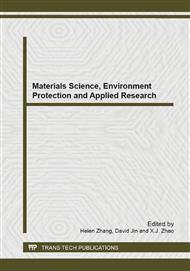[1]
E.U. Franck and G. Wiegand: Pol. J. Chem. Vol. 70 (1996), p.527.
Google Scholar
[2]
C. Augustine and J.W. Tester: J. Supercrit. Fluids Vol. 47 (2009), p.415.
Google Scholar
[3]
B. Wellig, M. Weber, K. Lieball, K. Prikopsky and P.R. von Rohr: J. Supercrit. Fluids Vol. 49 (2009), p.59.
Google Scholar
[4]
P. Stathopoulos, K. Ninck and P.R. von Rohr: Combust. Flame Vol. 160 (2013), p.2386.
Google Scholar
[5]
C. Narayanan, C. Frouzakis, K. Boulouchos, K. Prikopsky, B. Wellig and P.R. von Rohr: J. Supercrit. Fluids Vol. 46 (2008), p.149.
Google Scholar
[6]
B. Wellig, K. Lieball and P.R. von Rohr: J. Supercrit. Fluids Vol. 34 (2005), p.35.
Google Scholar
[7]
P. Stathopoulos, K. Ninck and P.R. von Rohr: J. Supercrit. Fluids Vol. 70 (2012), p.112.
Google Scholar
[8]
K. Príkopský, B. Wellig and P.R. von Rohr: J. Supercrit. Fluids Vol. 40 (2007), p.246.
Google Scholar
[9]
J.P.S. Queiroz, M.D. Bermejo and M.J. Cocero: J. Supercrit. Fluids Vol. 76 (2013), p.41.
Google Scholar
[10]
P. Cabeza, J.P.S. Queiroz, S. Arca, C. Jimenez, A. Gutierrez, M.D. Bermejo and M.J. Cocero: Chem. Eng. J. Vol. 232 (2013), p.1.
Google Scholar
[11]
P. Cabeza, M. Dolores Bermejo, C. Jimenez and M. Jose Cocero: Water Res. Vol. 45 (2011), p.2485.
Google Scholar
[12]
M.D. Bermejo, C. Jimenez, P. Cabeza, A. Matias-Gago and M.J. Cocero: J. Supercrit. Fluids Vol. 59 (2011), p.140.
Google Scholar
[13]
M.D. Bermejo, P. Cabeza, J.P.S. Queiroz, C. Jimenez and M.J. Cocero: J. Supercrit. Fluids Vol. 56 (2011), p.21.
Google Scholar
[14]
A. Sobhy, R.I.L. Guthrie, I.S. Butler and J.A. Kozinski: P. Combust. Inst. Vol. 32 (2009), p.3231.
Google Scholar
[15]
A. Sobhy, I.S. Butler and J.A. Kozinski: P. Combust. Inst. Vol. 31 (2007), p.3369.
Google Scholar
[16]
R.M. Serikawa, T. Usui, T. Nishimura, H. Sato, S. Hamada and H. Sekino: Fuel Vol. 81 (2002), p.1147.
Google Scholar
[17]
H. Sato, S. Hamada, R.M. Serikawa, T. Nishimura, T. Usui and H. Sekino: High Pressure Res. Vol. 20 (2001), p.403.
Google Scholar
[18]
F.M. Zhang, S. Chen, C. Xu, G.F. Chen, J.M. Zhang and C.Y. Ma: Desalination Vol. 294 (2012), p.60.
Google Scholar
[19]
J. Zhang, S.Z. Wang, Y. Guo, D.H. Xu, X.D. Li and X.Y. Tang: Ind. Eng. Chem. Res. Vol. 52 (2013), p.10609.
Google Scholar
[20]
F. Vogel, J.L.D. Blanchard, P.A. Marrone, S.F. Rice, P.A. Webley, W.A. Peters, K.A. Smith and J.W. Tester: J. Supercrit. Fluids Vol. 34 (2005), p.249.
Google Scholar
[21]
J. Roesler, S. Martinot, C. McEnally, L. Pfefferle, J. -L. Delfau and C. Vovelle: Combust. Flame Vol. 134 (2003), p.249.
DOI: 10.1016/s0010-2180(03)00093-2
Google Scholar
[22]
T. Hirth and E.U. Franck: Ber. Bunsen-Ges. Phys. Chem. Vol. 97 (1993), p.1091.
Google Scholar


